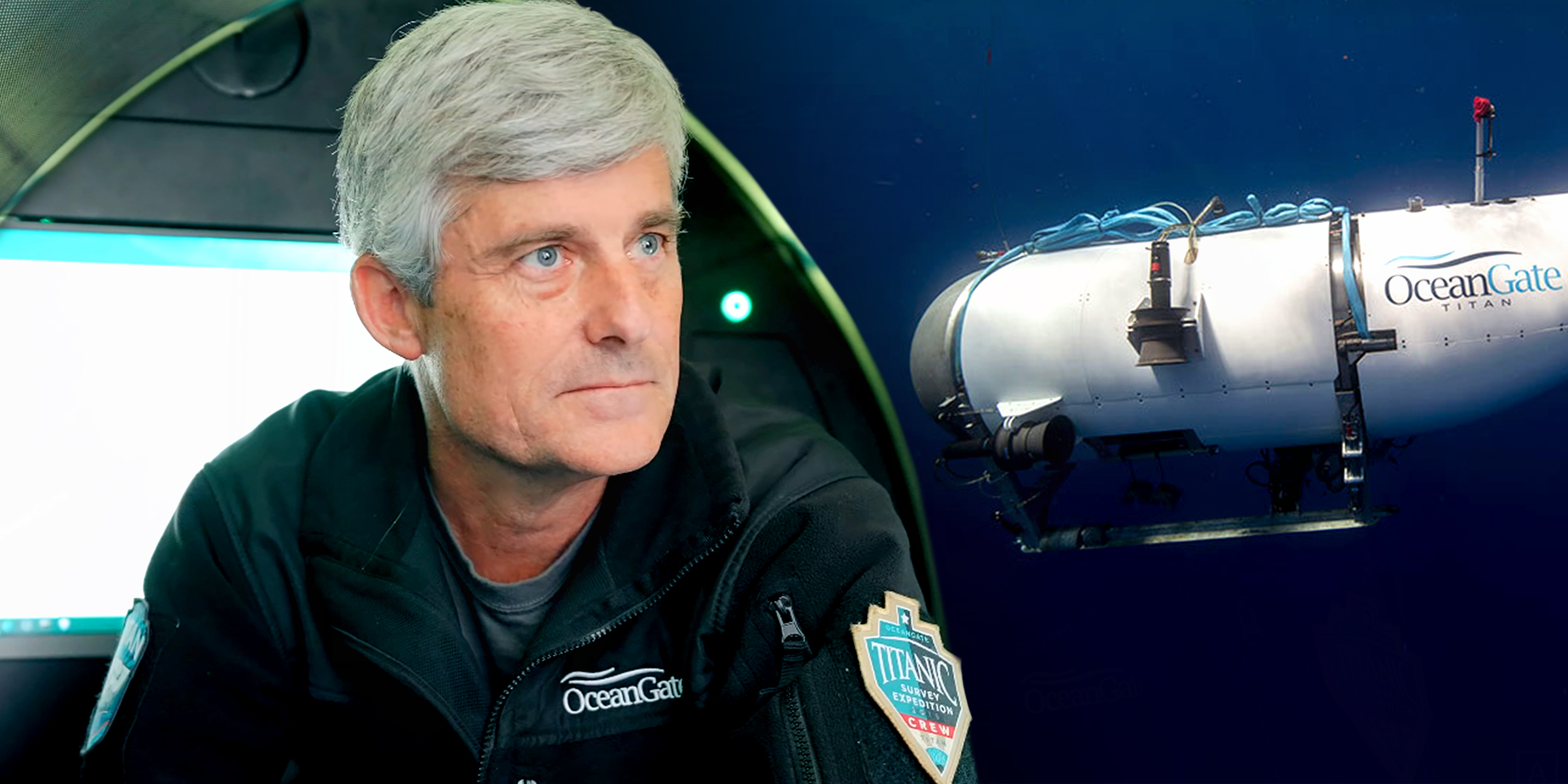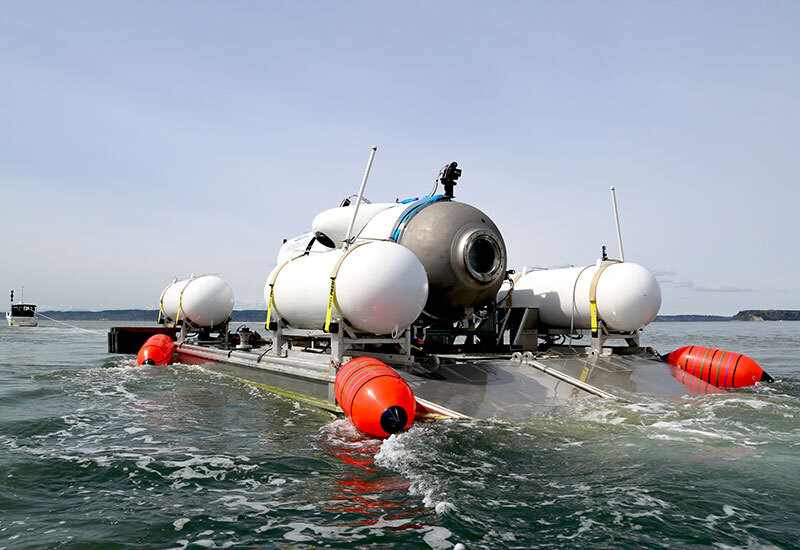
Resurfaced Legal Document Details Potential Causes of the Titan Submersible Wreckage
Sunday, June 18, saw five men board a submersible vessel called the Titan. The ship was built by OceanGate for an expedition to see the Titanic wreck. Unfortunately, things went tragically wrong.
When the Titan went down to the Titanic wreck on June 18, it lost contact with those above the surface, resulting in search and rescue teams being deployed to find those on board the ship before their oxygen supply ran out.
As the search continued, the world watched with various degrees of hope that the vessel might be found in time for the men to be saved and returned safely to their respective families before too long.
When the five men boarded the 21-foot vessel on June 18, a 96-hour oxygen supply was on board. The US Coast Guard calculated that the ship would likely run out of oxygen early on the morning of June 22.
Four days after the submersible went missing, it was confirmed that all five of the men had "sadly" passed away. A statement from OceanGate confirming their loss read:
"Our hearts are with these five souls and every member of their families during this tragic time. We grieve the loss of life and joy they brought to everyone they knew."
The company said it was a difficult time for their employees, who were exhausted by the rescue efforts and now grieving the loss of their CEO, Stockton Rush, and the four other passengers with him in the sub. It also acknowledged the heartbreak of those who knew the passengers and requested that the public grant them privacy during this difficult time.
The five passengers of the Titan were presumed dead after a remote-operated vehicle (ROV) detected debris from the vessel in the search area near the Titanic wreck. The ROV first caught the tailbone of the ship. Another four pieces of debris were then discovered.
Paul Hankin, a deep sea expert, confirmed the environment where the debris was found was "unforgiving" and said, "The debris is consistent of a catastrophic implosion of the vessel." Hankin said the teams would continue searching until they could find more conclusive answers.
Rescue teams notified the families of the five men on board as soon as they found the debris and then held a press conference revealing all available details about the tragedy to the public.
Newly Released Footage of The Vessel
A newly released video of OceanGate CEO Stockton Rush giving a tour of the Titan and explaining how it was built has emerged following the tragedy. Speaking to Alan Estrada who filmed the video last year, Rush admitted, "I've broken some rules to make this." He did not meet safety standards with the vessel.
According to Rush, who wanted to be remembered as an innovator, there was a rule against using carbon fiber and titanium to build the vessel, but he broke that. He also mentioned how he carefully chose the laws he adhered to and the rules he broke.
Rush also explained that the vessel's acrylic window gets "squeezed" by the pressure as the ship descends and that it gives a warning if it's about to fail.
The water pressure around the wreck is 6000 pounds per square inch, which is equivalent to two tons exerted on an object. If a vessel could not stand the pressure, it would implode and allow water to rush into it.
Thus, some experts believed the vessel suffered from structural damage because the ship had not met safety standards before it set out on its journey to tour the 1912 marine wreck.
Stockton also talked about all the controls in the vessel but said he hoped he could create it one day to require even less human input. He shared:
"Hopefully, what I want it to be, is you walk in – it senses motion, it senses who you are. You say, 'Hello, Titan' – it senses your voice – it says: 'Stockton, how deep are we diving today?' I say we're going to 4,000 meters."

The Titan submersible vessel in June 2023 | Source: Getty Images
Rush confessed he didn't see his submersible as an invention but rather as an innovation because innovation was the act of taking an existing invention and making it widely accepted. Rush's goal was to make ocean exploration as widely accepted as space exploration, believing the future of humankind was under the sea, not in space.
Why Was There A Lawsuit Against OceanGate?
While Rush admitted to breaking the rules when he built the submersible, an ex-employee, David Lochridge, said the structural integrity of the vessel is the exact reason that he is no longer an OceanGate employee.
In 2018, Lochridge expressed concerns about some factors of the vessel, one of them being that the porthole, out of which the Titanic would be seen, was not built to withstand the pressure at the depth it was aiming to dive to.
The porthole was made to dive to roughly 4000 feet, but the Titanic is 13000 feet under the water's surface. Yet when Lochridge expressed his concerns and desire for more testing to be done, he was told there was no equipment to do so.
Lochridge alleged that when he aired his concerns about the safety of the sub, instead of doing the necessary tests and ensuring passengers would be safe, they immediately fired him, resulting in a lawsuit.
Rush Had Connections to The Titanic
On June 15 this year, Rush appeared in a photograph with his wife Wendy Rush and other OceanGate team members. They all seemed to be happy and excited about their expeditions.
In an ironic twist of fate, Wendy is the descendant of a famous couple who died on the Titanic. She is the great-great-grandchild of two first-class passengers, Isidor Strauss and his wife Ida, who were on board the ship during the 1912 tragedy that claimed thousands of lives.
Isidor, born in 1845 and co-founder of the popular department store Macy's, and his wife were two of the wealthiest people on board the Titanic.
Survivors of the wreck recalled seeing Isidor refusing a seat on the lifeboats until all women and children had been given a seat. Meanwhile, his wife of four decades refused to leave her husband's side.
The couple was seen standing side by side as the Titanic sank. They were then immortalized when James Cameron, the director of the film, "Titanic," shared their story in the movie, depicting them in bed together as the ship went down.
Their great-great granddaughter Wendy married the OceanGate CEO in 1986, and she has been on three OceanGate expeditions. She is the Director of Communications and Expedition Team Member at her husband's company. According to her LinkedIn profile, she studied at Princeton University and is based in Seattle, Washington. She has been part of the company for ten years.
The families of all those on board have asked for privacy during this difficult time. We send our thoughts and prayers to them as they navigate the untimely loss of their loved ones.
Subscribe to AmoMama on Google News!
